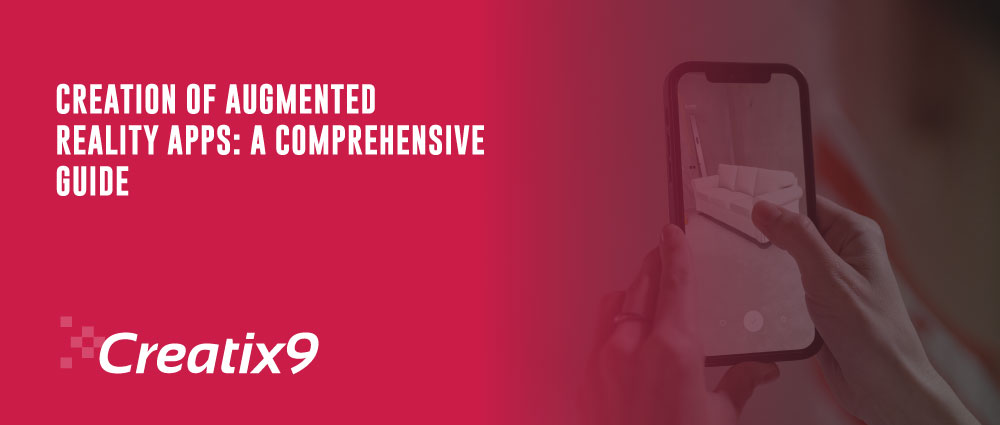
The technology that has gained popularity in recent years is augmented reality. Many applications have made billions of dollars on the market. A good example is Pokémon Go.
With a projected CAGR of 60, 6%, the market for AR solutions, which was valued at $7.12 billion in 2021, would increase to $11.45 billion by the end of 2022. It will rise at a CAGR of 57, 9% to $71, and 17 billion by 2025.
You may be wondering how to create an augmented reality app or include such features into your existing application. This blog provides a comprehensive guide to creating augmented reality apps, covering every step of the procedure.
Augmented Reality: What Is It?
Let’s first have a better knowledge of augmented reality technology before learning how to create an augmented reality app.
One way to think of augmented reality is as a bridge connecting “virtual” data with the physical world. The following qualities are required:
- Real-time fusion of virtual and physical data
- Be real-time interactive (a change in the real plane requires a change in the virtual data); “see” the world around us in three dimensions (because we live in three-dimensional space)
Users can already find AR technology in many places. All they need is a smartphone with a camera to experience augmented reality. There are several examples of similar solutions, including Sephora, IKEA Place, Pokémon Go, and many others.
Another technology that is frequently confused with augmented reality is virtual reality. They may have a similar notion, but they are fundamentally completely different.
AR solutions project 2D or 3D things into actual situations. With the aid of VR headsets or glasses, users can immerse themselves in a virtual environment.
Applications for Augmented Reality
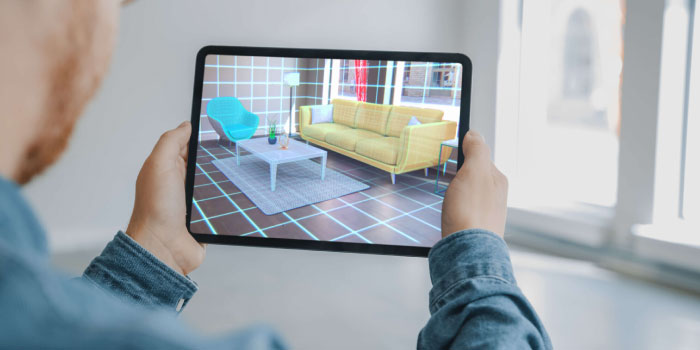
The type of augmented reality app development you choose will rely on the commercial objectives you have for your application. Let’s examine the primary categories of AR solutions:
- Augmented reality using markers
- AR that is dependent on location
- Augmented reality projection
- Augmented reality based on superimposition
We describe their differences and the technology that were employed to create each of them below.
- App for Augmented Reality Using Markers
Based on picture recognition or image markers, this type of AR application works. When the application finds something it can identify in an image or item, it applies digital data to the marker.
Such systems can make use of markers like QR codes or other non-3D or 3D objects.
2. Augmented Reality That Is Based On Location
The most common application of augmented reality is location-based AR solutions, commonly referred to as marker-less AR. Instead of utilizing markers, these apps build AR objects depending on the user’s present location by employing GPS, accelerators, compasses, and other location detectors. A good illustration of this kind of application is Pokémon Go.
3. Display Augmented Reality
These applications rely on visual odometer. To pinpoint the precise location of things and carry out the necessary activities, they use sophisticated algorithms and gather data from several sensors.
As projection AR can display concealed items from built-in cameras, it can be employed as a component of the parking system. This technology can also be used by engineers and architects to more thoroughly research potential construction sites.
4. Augmented Reality Based On Superimposition
In healthcare and medical, superimposition-based applications are used. The technology explains itself. An AR object is processed, recognized, and superimposed on a real image of the environment.
The Greatest SDKS and Tech for Building Augmented Reality Apps
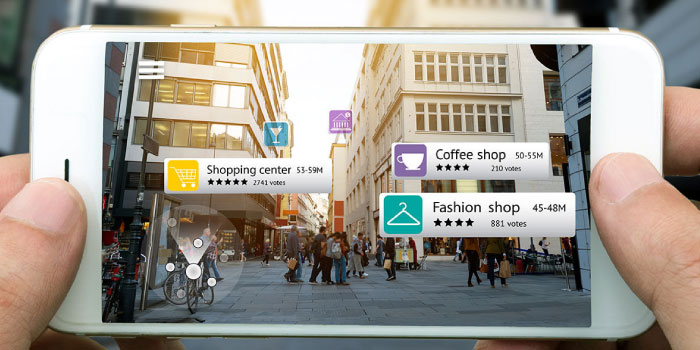
Knowing which technologies can be applied to the creation of an augmented reality app is a prerequisite.
Creation of software for augmented reality SDKs are tools made to assist custom software developer in creating augmented reality apps more quickly and without generating third-party components.
Let’s take a look at some augmented reality development tools that your app can utilize.
You should consider the following aspects while selecting the finest SDKs to meet your company goals:
- Native AR support
- The operating system it is designed for the programming language used official SDK support
- License and monetization
Understanding such information about SDKs will enable you to select the ideal option that won’t cost you a fortune to use and won’t impose any restrictions on the process of developing augmented reality applications.
Vuforia
One of the most well-liked augmented reality development SDKs, Vuforia, enables businesses to provide their clients fully immersive AR experiences. Vuforia may be utilized to create native iOS and Android apps because Unity makes its API available. It is also regarded as a comprehensive SDK with a wide range of features for AR applications.
- Real-time target image, English text, and 3D object recognition and tracking
- Placing virtual things in a real environment, such as 3D models
- Versatile 3D configurations
- Area Target Generator for the Vuforia Engine
- Goals for Scanned Models
- Multiple Model Detection for Advanced Model Targets
- When programs are halted, keep working
- Mode of simulation
- Engine Tracking Scale for Vuforia
Wikitude
The creation of AR prototypes and mobile apps using Wikitude. With the new Wikitude SDK, programmers can integrate geolocation, object identification, and picture tracking. Some of its attributes are:
- 3D tracking and recognition
- Tracking and identification of images
- Cloud identification
- Location-based AR Video Overlay Integration with Smart Glasses
Kudan
Another ubiquitous AR SDK is called Kudan, and the following are some of its key features:
- Requirements for location and tracking with and without markers
- Recognizing images in 2D and 3D
- Visual-SLAM Fusion Sensor – White Light Source Detection Sensor
- Dynamic integration
- Unity SDK default configuration
EasyAR
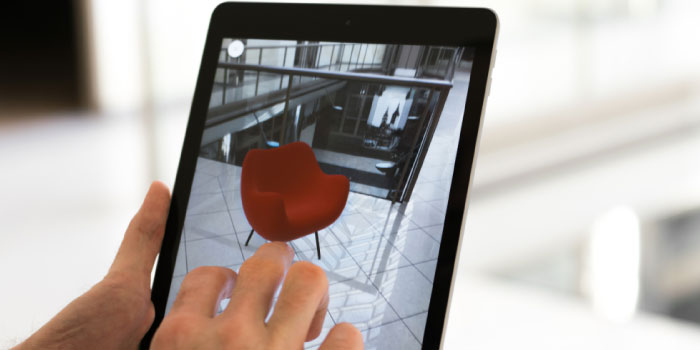
This powerful SDK provides a wide range of functions for creating many kinds of augmented reality apps, including:
- SLAM facilitates 3D tracking.
- Cloud recognition, screen recording
- unlimited requests for recognition
IOS ARKit
Apple’s iOS augmented reality SDK aims to assist iOS custom software developer in integrating AR. The tool has various helpful functions, including:
- Motion tracking on a device
- Captured via a camera
- Contemporary scene processing
- Inertial odometer with vision
- Aircraft detection (floors, tables, etc.)
- Estimating the lighting
- Support for Unity and Unreal engines
Google ARCore
One of the most well-liked SDKs for creating apps for smartphones and tablets is Google ARCore. Interestingly, its AR programs may be used on iOS and Android devices, enabling the creation of cross-platform AR apps. Position tracking and object recognition are the two pillars on which ARCore is built. Its distinguishing characteristics include:
- Real-time lighting evaluation
- Accurate positioning of virtual objects
- Simple tracking for realistic object creation
- Vertical, horizontal, and sloping surfaces: Size and Location
- Movement tracking based on the location of the phone
How Can Industry Utilize Augmented Reality?
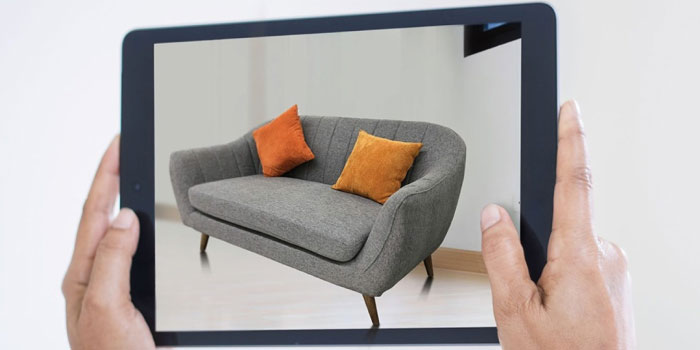
The use of augmented reality technology is spreading across several sectors. The most potential applications for augmented reality technologies are shown in the graphic below (according to data by Hackernoon).
Innovative business solutions are provided by AR technology. It will take a few years before it is used by businesses of all sizes, but you should start planning for its deployment immediately. Let’s determine the cause.
- E-commerce
E-commerce and retail are already actively using the technology. There are several examples, the IKEA app, and even Loreal. Because it enhances the buying experience, the usage of AR in e-commerce is already demonstrating the technology’s potential. After the COVID-19 pandemic, the technology will definitely gain even greater traction in e-commerce. Customers may use these applications to try on clothes, cosmetics, and furniture to see how it would appear in their residences, among many other things.
- Healthcare
There are several applications for artificial intelligence in healthcare and medicine. Today, augmented reality tools for education are already being utilized to instruct students and for medical operations like surgeries.
With Microsoft HoloLens, surgeons may do better surgeries, identify tumours, visualize blood flow, and other medical procedures thanks to a deep grasp of human anatomy.
- Travel and Tourism
Tourism and travel are another area of application. Visitors could experience historical events firsthand by travelling to specific sites rather than reading about them.
- Games and Entertainment
The most potential sector for augmented reality app development is entertainment. By enabling users to engage with virtual items in the actual world, such technologies can provide a completely new experience. The most successful AR game to date, Pokémon Go, has made over four billion dollars in revenue. We have yet to come across any other popular names that will perform better than this game.
- Education
Look into schooling if you’re wondering how to create an augmented reality app that will change the world. Students can view virtual items in the learning environment using AR-enabled technologies.
The use of certain markers inside books to prompt the display of multimedia information is one of the potential implementations.
- Architecture and Real Estate
Another sector that could profit from AR technology is this one. With the aid of these tools, professionals may display their designs to clients and investors and see how their buildings will fit in with the surroundings.
- Military
The U.S. Air Force Research Laboratory launched the first augmented reality applications for military use in 1992. Nowadays, the military can employ specialized goggles to give those data to aid with ground navigation.
There are many businesses that can profit from the use of augmented reality, and in the future, we’ll see a lot more applications for this technology.
Conclusion
In the upcoming years, the size of the global AR market will increase significantly. Statista projects that by 2025, the augmented reality market will have grown from US$3.5 billion in 2017 to US$198 billion. Companies from a variety of sectors have understood the advantages of AR for enhancing consumer engagement, enhancing product promotion, boosting productivity, etc. furthermore if you are looking for industrial automation software then get in touch with Creatix9.

